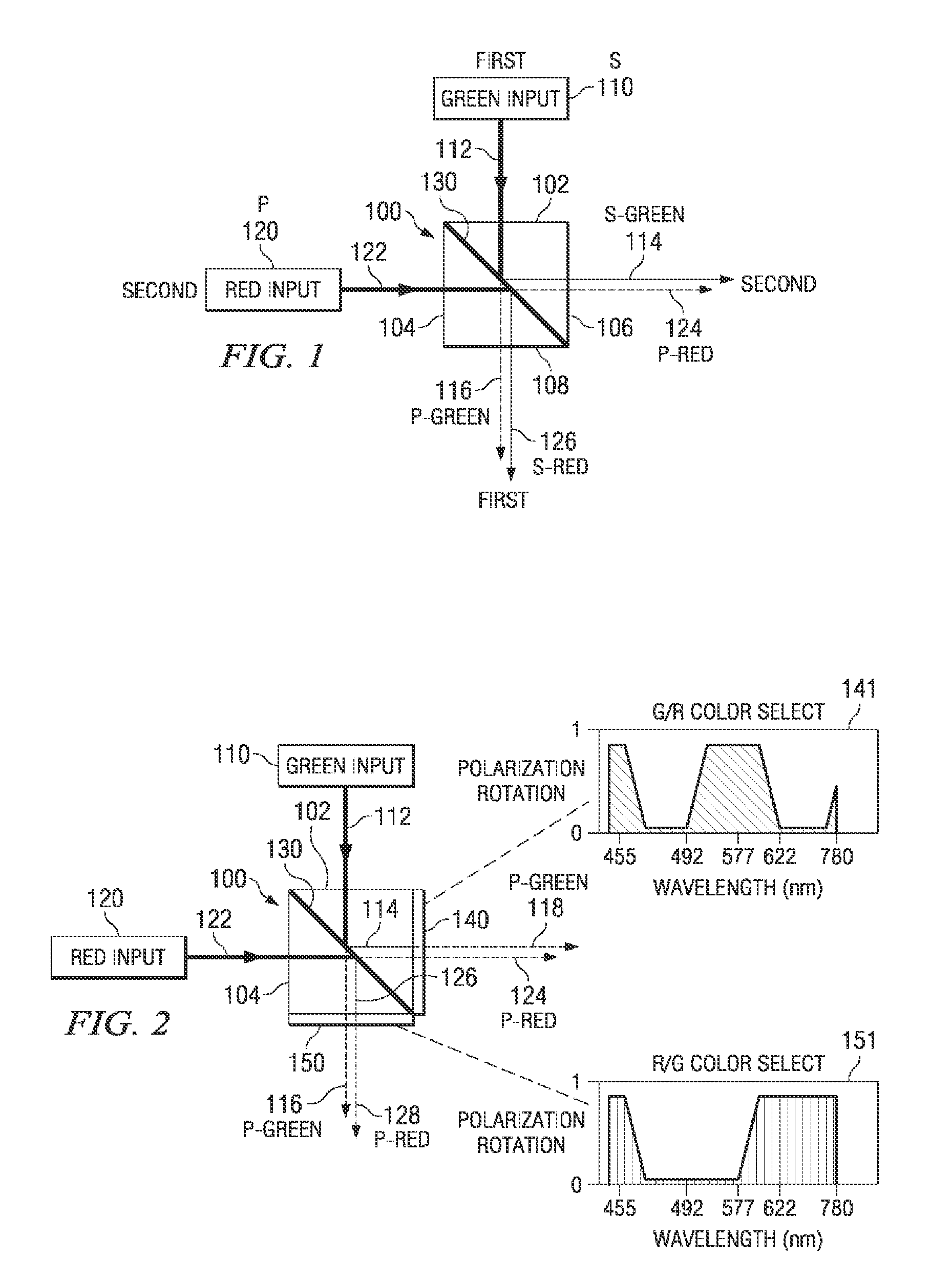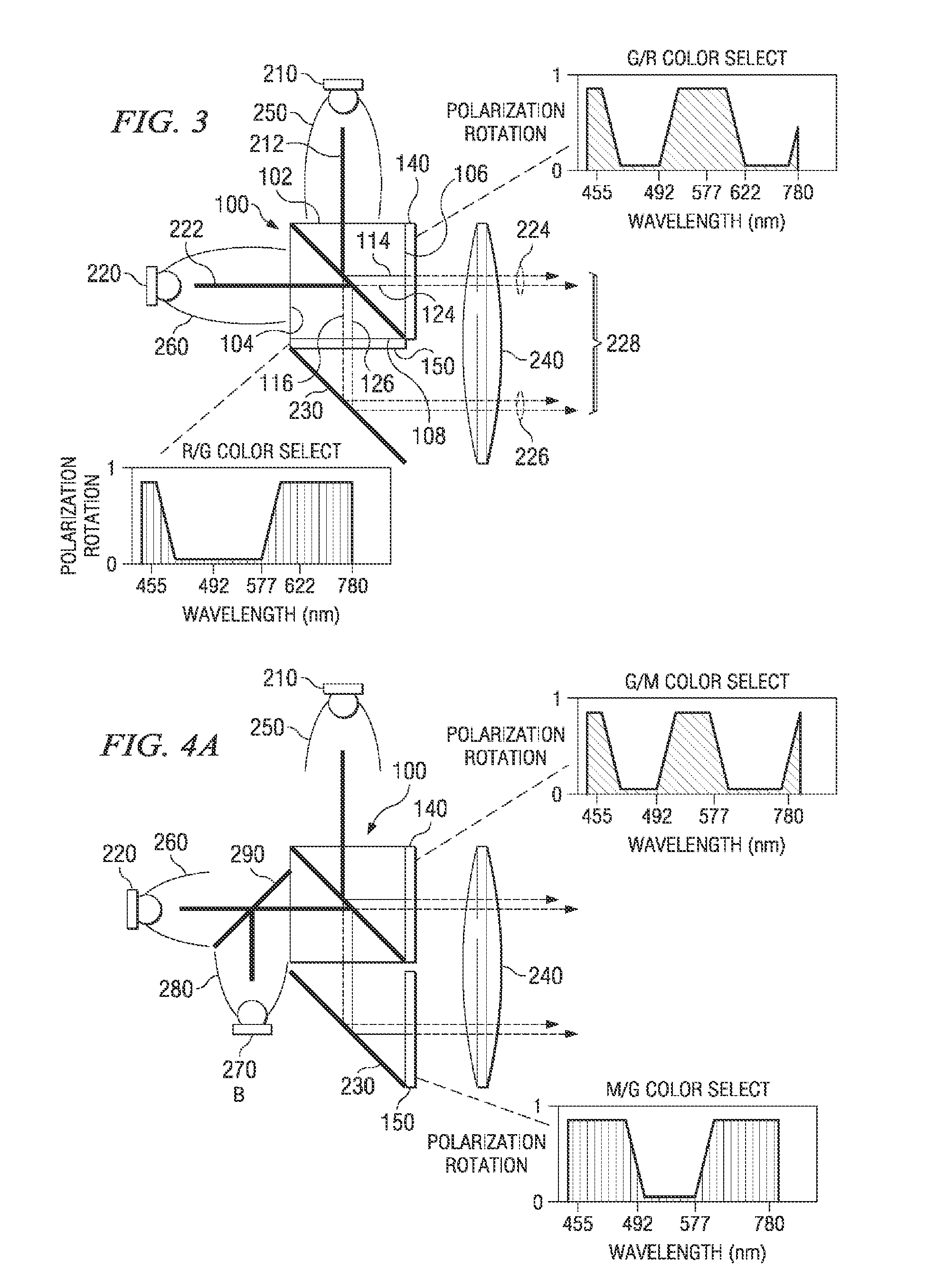Illumination systems
a technology of polarization components and polarization beams, applied in the field of polarization systems, can solve the problems of large beams, color and polarization components are generally not divided and recombined in the dichroic approach does not generally provide for the splitting and recombining of colors and polarization components back into a single combined beam, so as to reduce the loss of combining and polarizing
- Summary
- Abstract
- Description
- Claims
- Application Information
AI Technical Summary
Benefits of technology
Problems solved by technology
Method used
Image
Examples
Embodiment Construction
FIG. 1 illustrates a polarization-separating unit 100 embodied as a single PBS element 100. Also shown are a first light source 110 and a second light source 120. The PBS 100 accepts light represented by line 112 from the first light source 110 and light represented by line 122 from the second light source 120. In the present embodiment, the light 112 from the first light source 110 is green and the light 122 from the second light source 120 is red. However, these colors are used only as examples, and are not intended to be limiting. That is, the light sources 110, 120 can be selected that emit any color of light. The PBS 100 acts to separate each beam 112, 122 independently into orthogonal polarized states. In the PBS 100, that component of light having its electric field substantially orthogonal to the plane of incidence (conventionally termed s-polarization) becomes reflected by the surface 130, while that component of the light having its electric field within the plane of incid...
PUM
 Login to View More
Login to View More Abstract
Description
Claims
Application Information
 Login to View More
Login to View More - R&D
- Intellectual Property
- Life Sciences
- Materials
- Tech Scout
- Unparalleled Data Quality
- Higher Quality Content
- 60% Fewer Hallucinations
Browse by: Latest US Patents, China's latest patents, Technical Efficacy Thesaurus, Application Domain, Technology Topic, Popular Technical Reports.
© 2025 PatSnap. All rights reserved.Legal|Privacy policy|Modern Slavery Act Transparency Statement|Sitemap|About US| Contact US: help@patsnap.com



